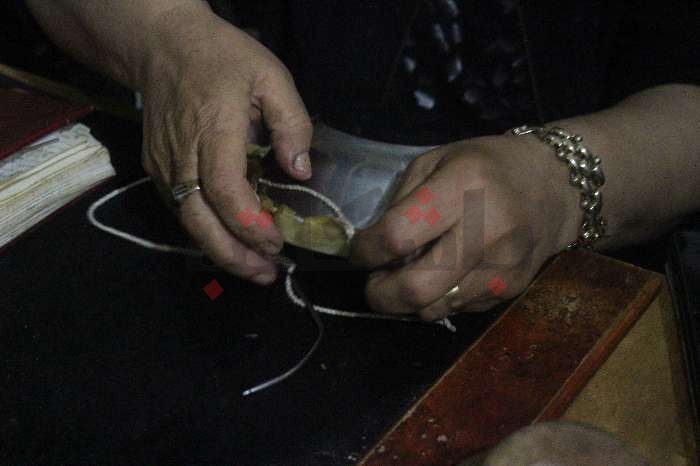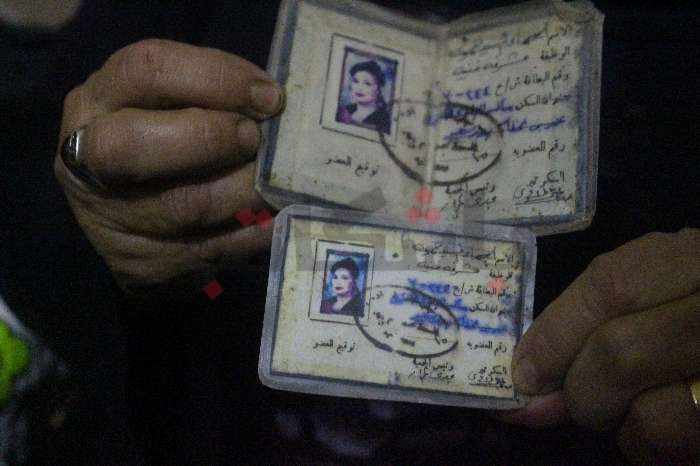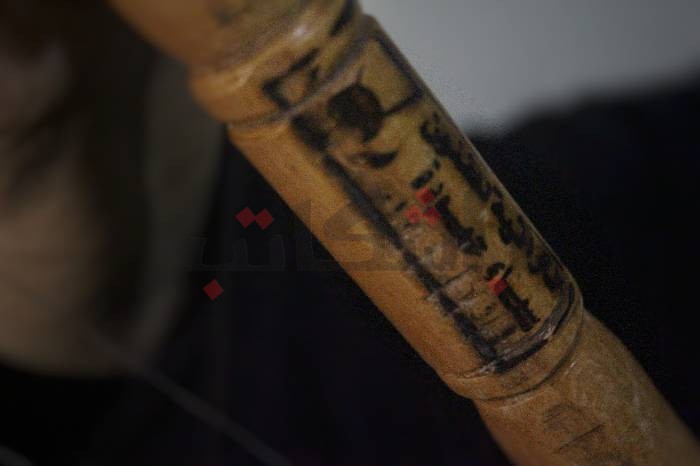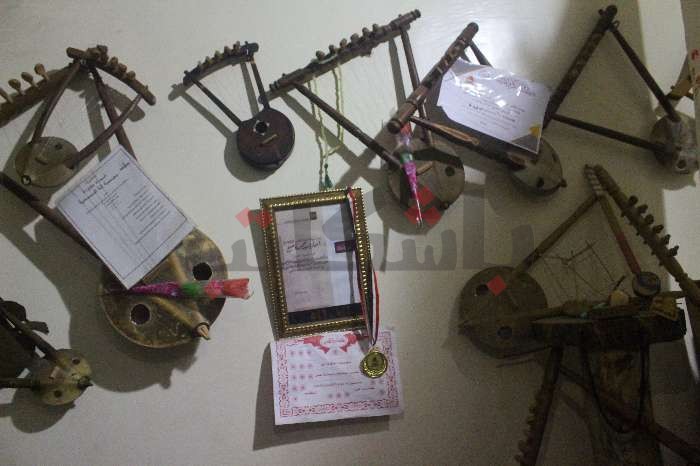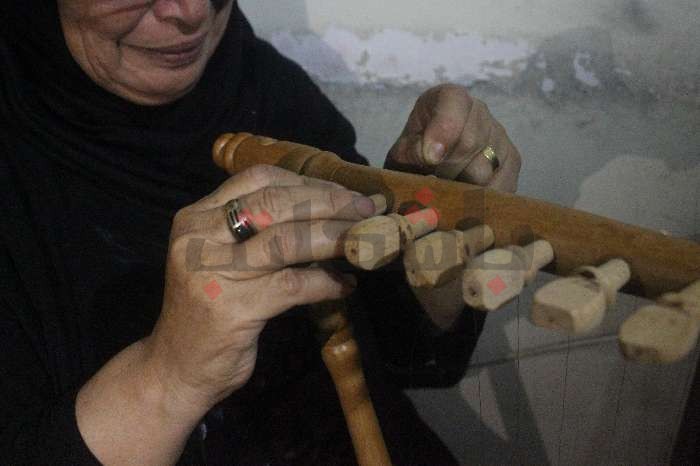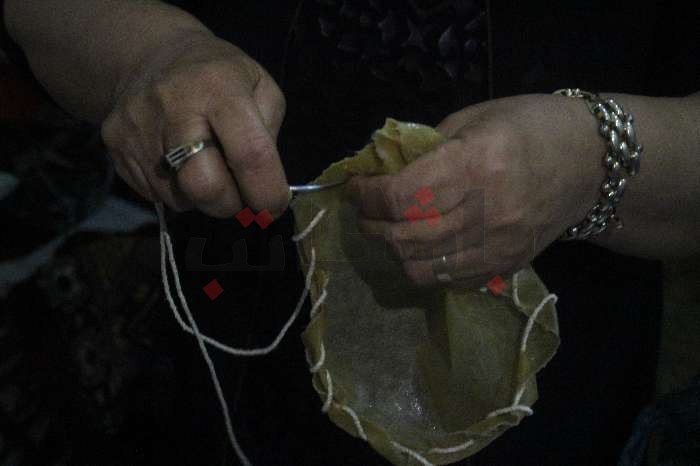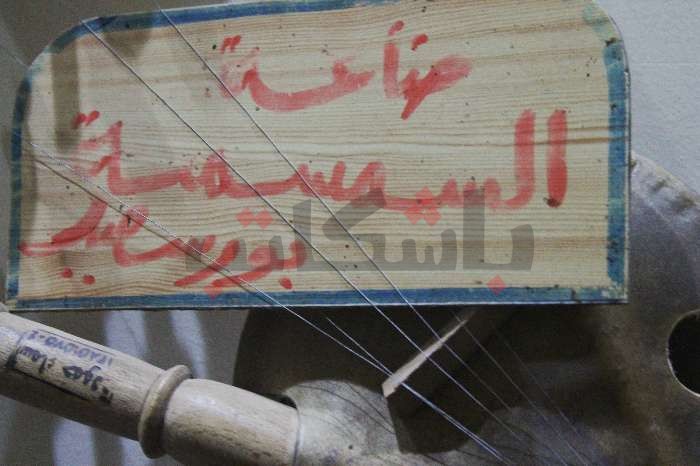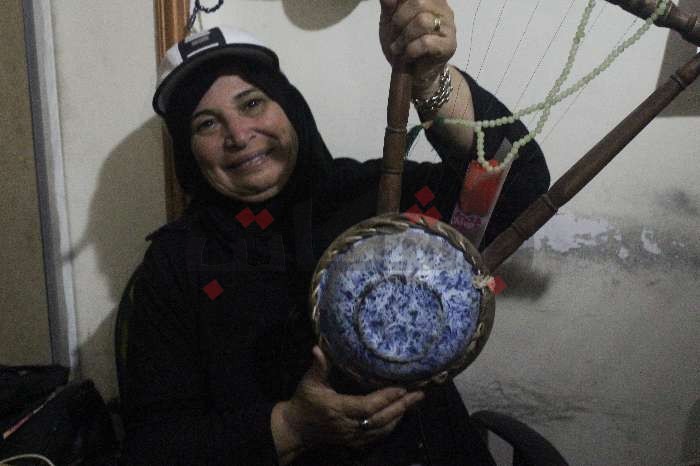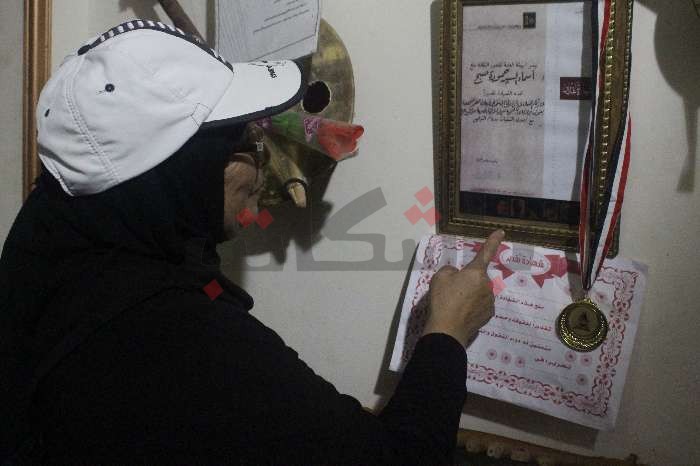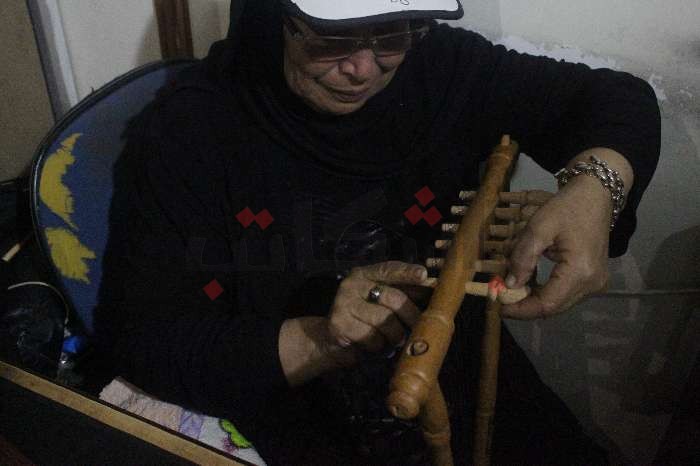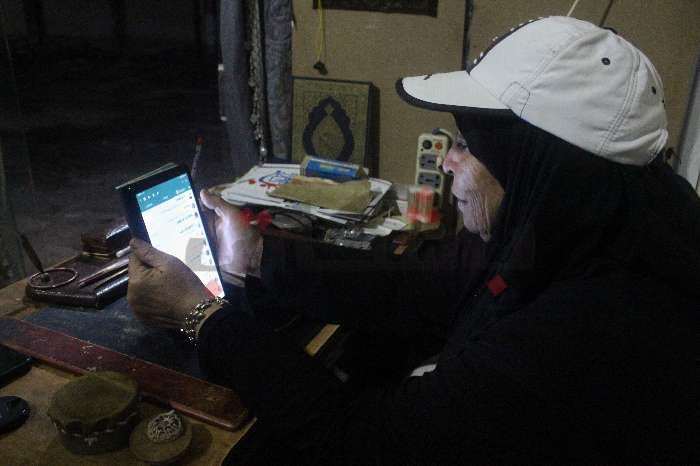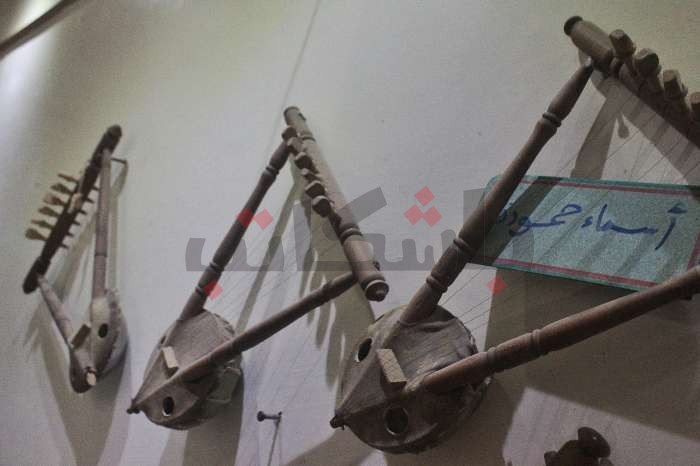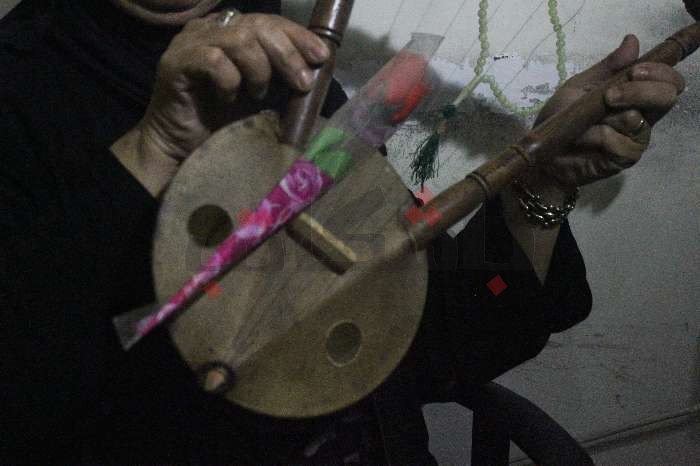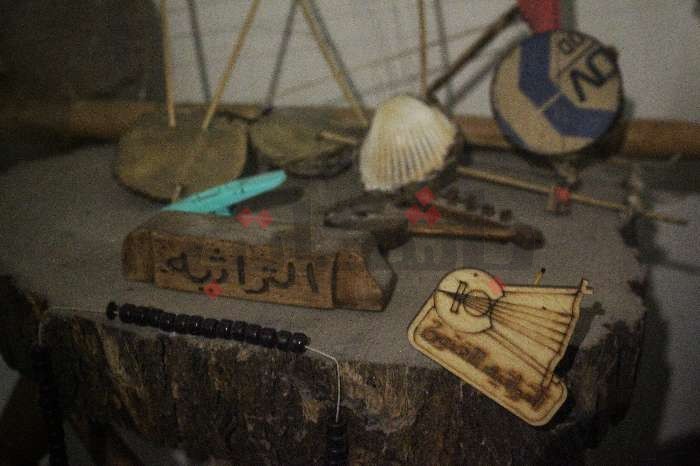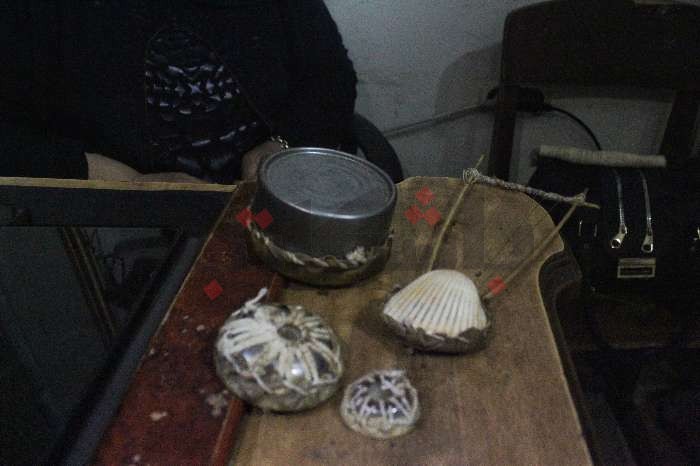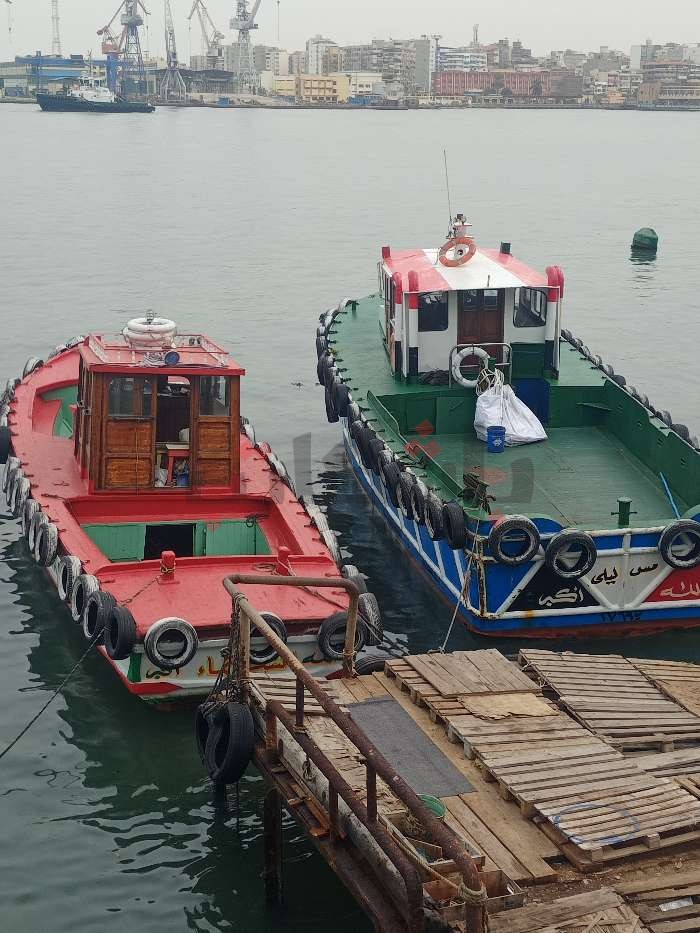Amidst tin plates, leather, threads, and wood, sits Asmaa holding a hammer to start a long day of hard work to make the Simsimiyya, the musical instrument she adores since she was a child, until she became the first Egyptian woman to make Simsimiyya and Tanbura.
“As if Simsimiyya is the Siren that put a spell on me, I adored dancing on its tunes and songs, I love even making it”, says the 53-years-old Asmaa Hamouda, after switching off the brass kerosene stove after finishing one of the many steps of manufacturing the Simsimiyya instrument, recalling the first time she decided to make it herself, she says “in one of Al-Arab neighbourhood streets, specifically by the end of the seventies, my father asked me to get him breakfast, so I went to the beans cart placed at the end of our street holding a tin plate, and a few steps before reaching the cart I changed my destination and took hold of the plate, I hurried to get the hide of the rabbit my mother slaughtered in the morning, and took a wooden bar from the vegetables’ basket, I got an old ring and a thread for the strings, time after time I excelled in making Simsimiyya, to the extent that I used to sell it to my friends at school for 5 EGP”.
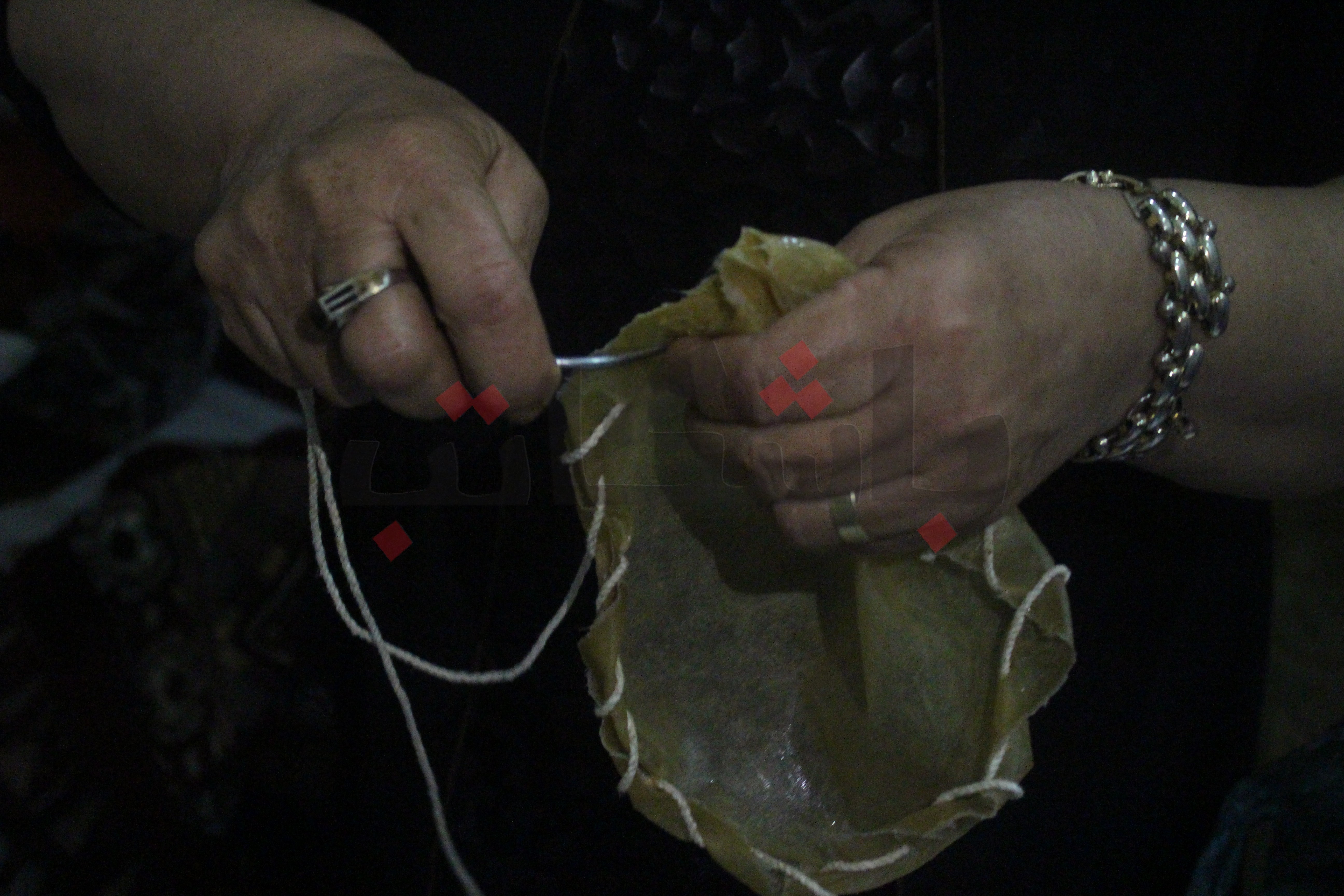
Asmaa wasn’t even 10 years old at that time, in fact she started her journey with art at the age of seven as a folk dancer for Baraem Al-Tofoula Troupe at the Port Said Culture Palace. She also sang at the tunes of Simsimiyya, and at that time she was in love with the songs of Hassan Al-Ashri, Al-Waziri and Kaboria, the most famous Simsimiyya singers at the time.
“I’ve always wanted to be an artist, but I let others steer my future, so I went through the normal stages of studying until I entered medicine school, but all the time I wasn’t convinced that this is what I really want to do for the rest of my life, and unfortunately I couldn’t take this decision after I spent almost 19 years in a governmental job, however I decided at last to quit being a forensic doctor and dedicated myself to making Simsimiyya”, said Asmaa to “Al-Porsaidiya”.
Asmaa graduated from the Faculty of Medicine, Ain Shams University in 1986, Anatomy Department, and despite her academic excellence she didn’t like medicine from first year, she used to go after school to spend time in Mohamed Ali Street in Cairo to enjoy arts and practice making Simsimiyya and selling it.
This passion continued even after she worked in teaching and moved between Ain Shams and Al-Qasr Al-Aini hospitals until 2011, when she decided to get an early retirement pension and finally dedicated herself to making Simsimiyya.
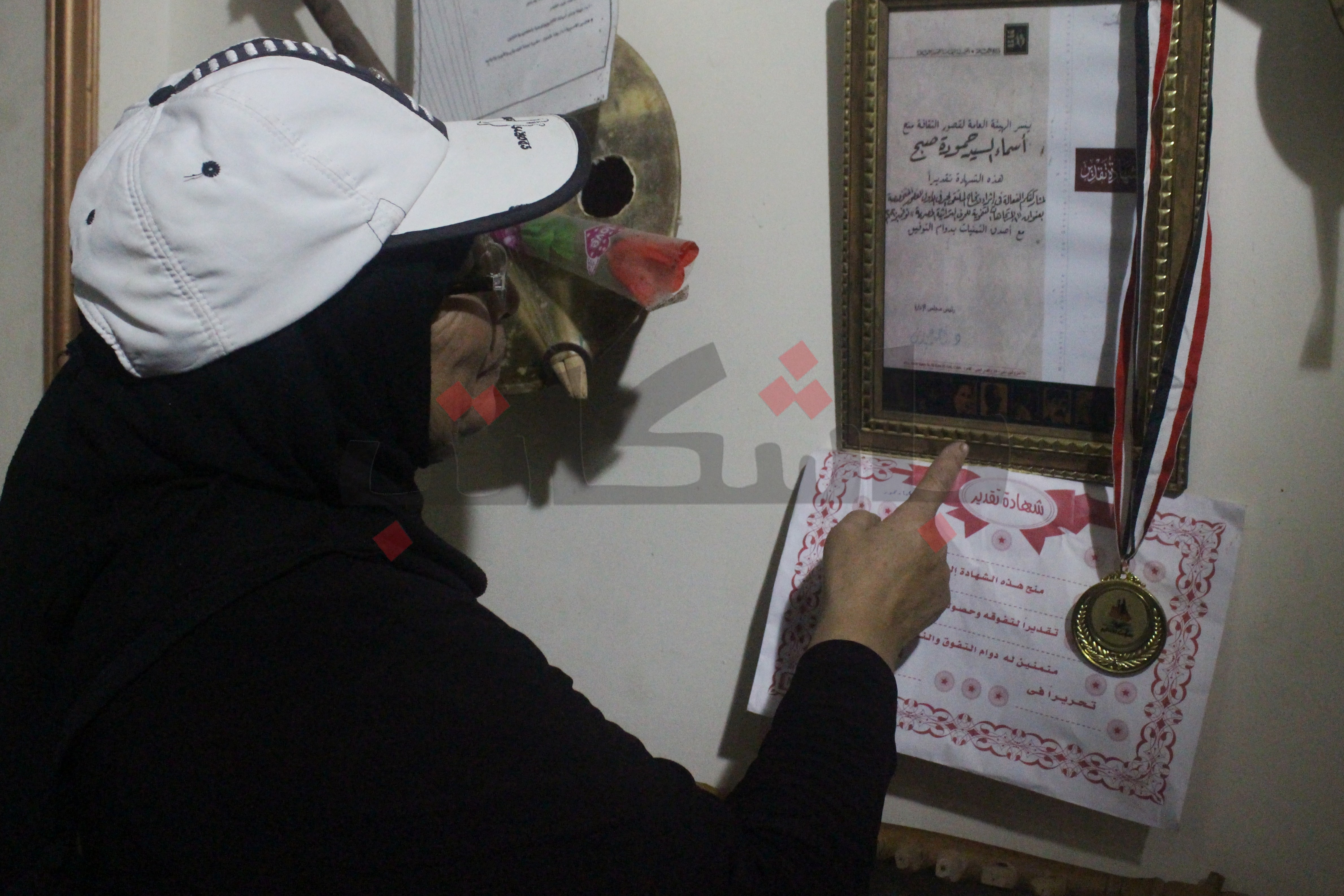
Although circumstances helped Asmaa change her profession, there was a time she regretted making this decision, “I regretted my decision because of my husband, for after I got my retirement money in 2013, I feared Simsimiyya might disappear due to the decrease in the number of professionals making it, so I decided to spend the whole money on making the first Simsimiyya museum and called it “Al-Turathiya” (heritage), in partnership with my husband Mohamed Ghali the famous Simsimiyya maker; the museum included many models of Simsimiyya showing how it developed over 200 years until now, like Tanbura instrument that major players used since 1948, also several instruments like quadrant Ganoh, quadrant Simsimiyya, and also Samtura”.
Then added, “at that time I felt deep regret after facing many problems with my husband concerning our partnership over the museum, even though I had spent all the money I had believing for this idea, he decided to end our partnership and took the museum for himself, however life didn’t stop there, I rent a store from one of my relatives and moved on, although I hoped that there would be some appreciation for my effort”.

Asmaa’s study of anatomy helped her own Simsimiyya making instruments and excel in using them, and from inside a humble workshop in Al-Dawahi neighbourhood, she managed to start a journey of marketing Simsimiyya in many countries like France, Greece, Saudi Arabia, and Kuwait where she is known among Simsimiyya lovers as “Doctor Asmaa”.
As the reason why Asmaa is attached to the Simsimiyya specifically, it is because she is interested in history; the instrument is mainly connected with the idea of “resistance” in the canal cities during the Tripartite Aggression and The Six-Day War in 1967 (an-Naksah); it is not just a musical instrument, the people see it as a symbol of hope for return from displacement.
“There are some old instruments that cost 150 EGP and others can cost up to 500 EGP, whereas the most expensive one costs 1,700 EGP. Instruments vary, the old ones are made from a tin plate, three wooden bars, and five long strings so the player can use it easily. Simsimiyya has many names like Tanbura, which reached Port Said with Abdullah Kabrabr from Suez, then it got smaller in size as it was passed down through generations”, says Asmaa.
Asmaa believes that the challenge of shifting a career lies in the ability to preserve a fixed sufficient income, especially when there is someone who depends on this income, and she also didn’t want to let those around her down, adding “unlike what many may think, my children help me making Simsimiyya since they were small children”.
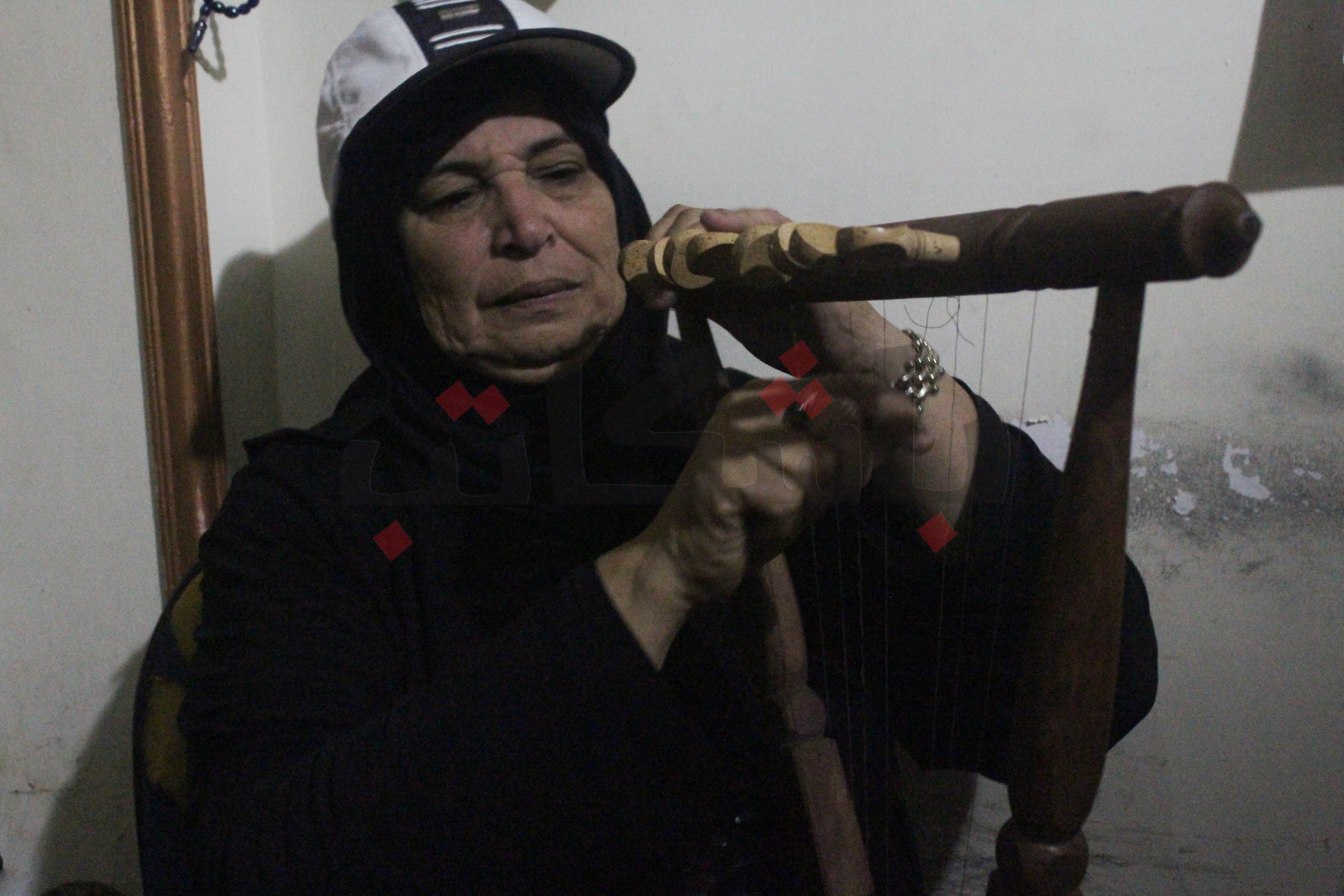
With a voice full of weariness and passion, Asmaa concluded her words saying, “women can do any job, I used to work with my father when I was six years old on a fishing boat inside the port, and I still practise the important profession of making Simsimiyya”.

